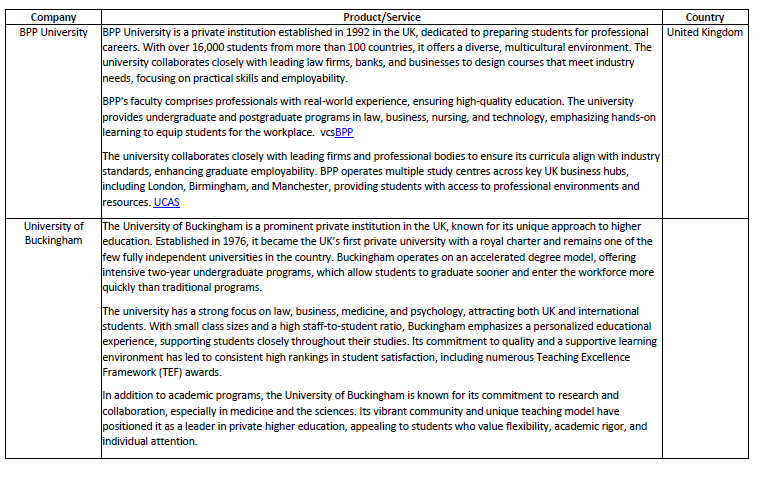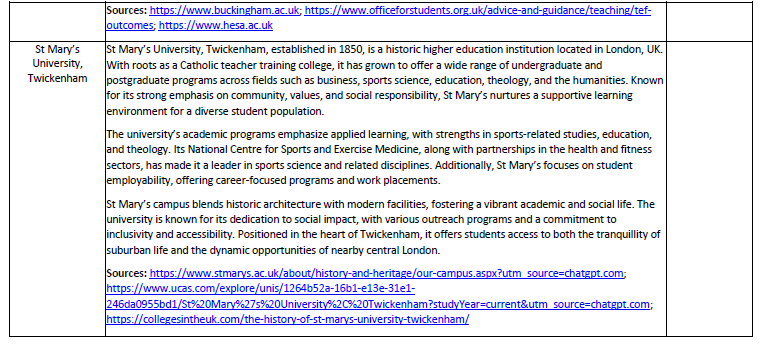TASK 2: Develop a customer journey map that reflects the consumer persona of a Gen Z consumer aged 20-27 for your chosen company product/service. Discuss the role of personas and customer journey mapping in developing customer experience strategies.
Customer Experience Strategy CW3 Summative Assessment Brief | BPP
| Category | Assignment | Subject | Management |
|---|---|---|---|
| University | BPP University | Module Title | Customer Experience Strategy |
| Assignment Type: | Summative |
| Coursework: | CW3 |
| Assignment Task: | Report |
| Count Words: | 2,500 |
Assessment Brief
You are tasked with writing a 2500-word report on the customer experience (CX) strategy of a specific product from a company of your choice listed below. The report should focus on analysing the CX strategy as it is implemented in a particular country where the company operates. You should write your report for the Board of Directors of the company you have chosen from the list below. Within the business report, reference should be made to relevant CX concepts, literature and application as appropriate. Only use tables to answer the requirements where it is suggested to do so. Below is an overview of the global fashion industry.
Industry Overview: UK HIGHER EDUCATION
The UK higher education industry is renowned globally, driven by a mix of prestigious universities, a diverse student population, and strong research output. The industry comprises over 160 institutions, including ancient universities like Oxford and Cambridge, and newer universities formed post-1992. UK universities attract large numbers of international students due to their high academic standards and extensive course offerings, particularly in fields like business, STEM, and social sciences. This international reputation contributes substantially to the UK economy, with higher education generating approximately £95 billion annually.
Government funding, tuition fees, and research grants are key financial pillars, but recent challenges, such as Brexit and fluctuating international student numbers, have strained budgets and funding opportunities. Brexit, specifically, has affected research funding from the European Union, impacting collaboration on large-scale projects. Meanwhile, the industry is increasingly investing in digital learning platforms and hybrid models to enhance flexibility and accessibility for students.
Current priorities within the sector include enhancing student experience, broadening access, and increasing employability outcomes. The UK government has also intensified its focus on the value-for-money aspect of education, emphasizing graduate employability and student satisfaction as key metrics. In response, institutions are strengthening career services, integrating digital skills into curricula, and building partnerships with industries. The industry’s resilience, combined with its continued focus on innovation and student outcomes, positions it to navigate these evolving challenges while maintaining its competitive edge globally.


Do You Need Assignment of This Report
Order Non Plagiarized Assignment
You need to address the following tasks:
TASK 1: Discuss the concept of Customer Experience, focusing on the emergence of customer experience (CX) as a competitive advantage for your chosen company.
Highlight the strategic importance of the following Critical Success Factors- People, Culture & Strategy for your chosen company.
Guidelines:
- Explain the entire customer experience for your selected brand: from initial contact to post-purchase interactions, identifying strengths, weaknesses, and opportunities for improvement.
- Highlight strategic importance: emphasize how exceptional customer experience drives customer loyalty, increases revenue, and provides a competitive edge in the marketplace.
- Discuss critical success factors within your selected company: identify key elements necessary for a successful CX strategy with regards the identified CSFs – People, Culture & Strategy.
- Provide actionable recommendations for your selected company: Offer practical steps and strategies for enhancing customer experience, ensuring they are specific, feasible, and aligned with business goals.
TASK 2: Develop a customer journey map that reflects the consumer persona of a Gen Z consumer aged 20-27 for your chosen company product/service.
Discuss the role of personas and customer journey mapping in developing customer experience strategies.
Guidelines:
- Visualize Data: Utilise visual elements like table and infographics to make the persona and journey map more engaging and easier to understand.
- Research Thoroughly: Collect data from various sources such as company websites, surveys, social media analytics, and market research reports to build a comprehensive understanding of your Gen Z consumer.
- Be Specific: Ensure your persona and journey map are detailed and specific to your chosen company product/service for greater relevance and impact:
- Explain the concept of consumer persona highlighting the following key elements specifically (Demographics/Profile, Motivations, Goals, Painpoints).
- Explain the concept of customer journey mapping identifying and explaining the following key elements specifically (Stages, Needs, Activities, Feelings, Opportunities for improvements).
- Incorporate Feedback: Use actual customer feedback and testimonials to validate your persona and journey map.
TASK 3: Suggest two performance metrics for your chosen company and justify why these are best for your chosen company to measure
Guidelines:
- Choose any two from the following: Return on Customer (RoC); Customer Retention Rate (CRR); Customer Churn Rate (CCR); Customer Equity (CE); Customer Effort Score (CES); Life-Time Value (LTV); Net Promoter Score (NPS)
- Clearly define the concept of metrics measurement and its role in customer experience
- Provide a detailed explanation of each CX metric, including how it is measured and why it is important for the chosen company.
- Evaluate the company’s current performance for each CX metric using data or examples. Identify two specific areas for improvement for each metric.
- Propose actionable strategies for improving each identified area. Ensure the suggestions are practical and tailored to the company’s context.
- Organize the response in a clear, structured format with headings and subheadings. Use bullet points or numbered lists for clarity. Ensure the response is concise and focused.
Example:
- CX metrics and explanation
- Current performance analysis
- Areas for improvement
- Suggested strategies
TASK 4: Critically evaluate the role of Interaction to deliver a seamless omni-channel customer experience by your chosen company.
Guidelines:
- Define Omni-Channel Strategy: Clearly outline the company’s omni-channel strategy and its goals using relevant company research.
- Customer Interaction Channels: Identify and describe all interaction channels used by the company.
- Customer Feedback Utilization: Analyse how customer feedback is collected and used to improve the omni-channel experience leveraging technological infrastructure
- Integration and Consistency: Evaluate how well these channels are integrated to provide a consistent customer experience.
Presentation: The report must be in clear font (e.g., Arial/Calibri point size 11) with consistent format styles, automatic page numbers and table of contents. Line spacing should be 1.5. Maximum word count: 2500 (Summative)
Suggested Structure: Your report structure should include the following sections:
- Cover page University cover sheet
- Title Page
- Table of Contents
- Introduction 50 words
- Report
- Task 1. 700 words
- Task 2. 600 words
- Task 3. 500 words
- Task 4. 500 words
- Conclusion 150 words
References: If you have consulted any source, either printed or on-line, you must include it in the list of your references and dates of internet access where applicable. For more information on referencing and the Harvard system access the link given in the General Assessment Guidance above.
Appendix (if appropriate): Appendices contain additional information which would be too detailed to include in the main body. Typical examples of information included in appendices can be glossaries (if it is a technical report), tables with supporting statistical data, examples of research and so on.
